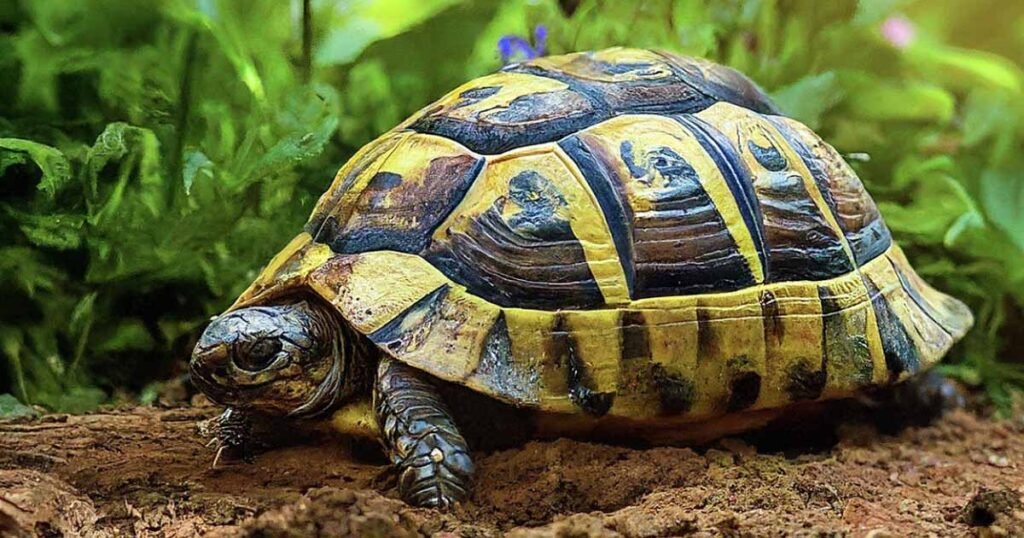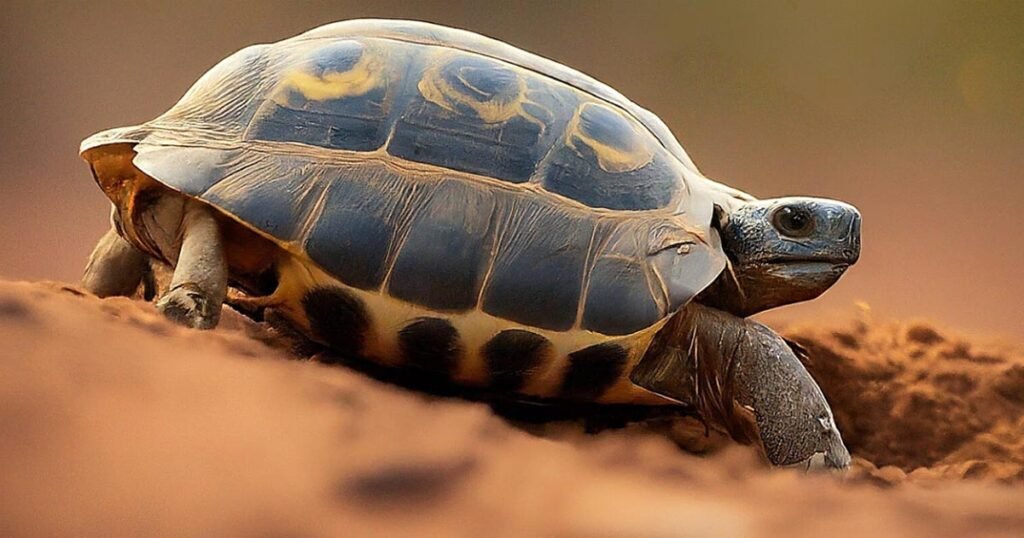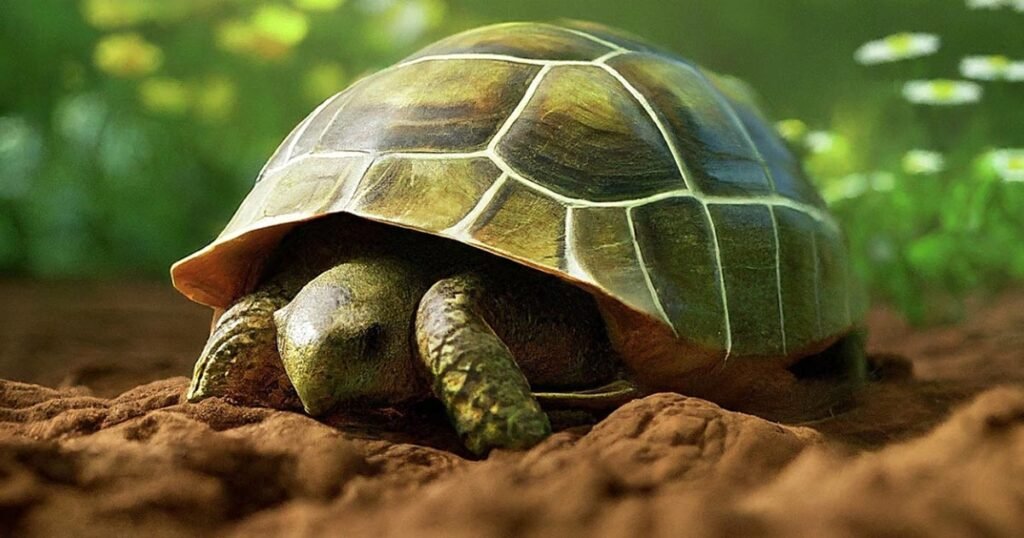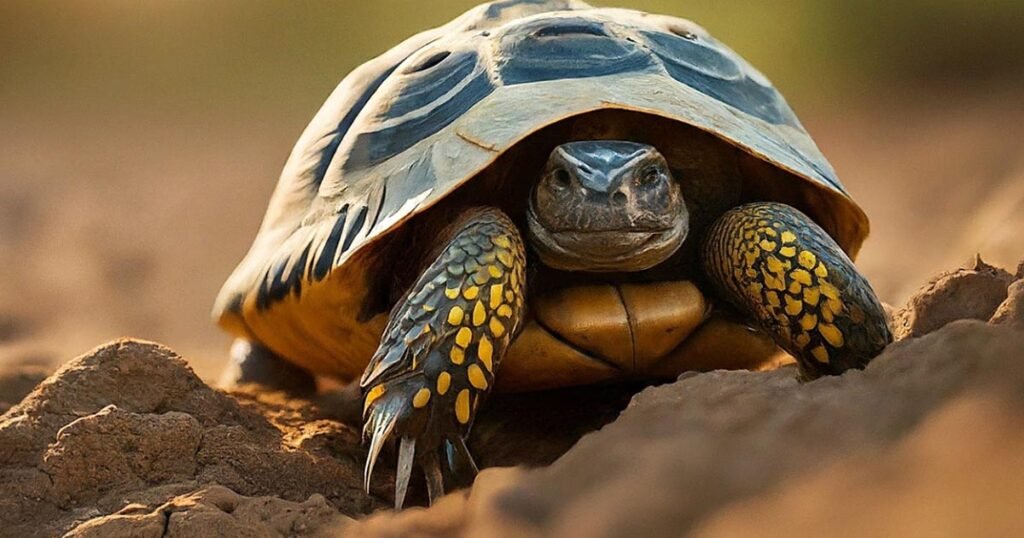If you are a new owner of a turtle, there are many exciting features you will discover as a newbie. When you take your turtle to the outside environment, you may notice they will start digging holes. You may encounter this habit for the first time, but do not worry! Digging whole is a natural habit of turtles; it is nothing uncommon. But why do turtles dig holes?
There are several reasons for this question. Turtles dig holes for different reasons, depending on their nesting and hibernating requirements. Terrestrial turtles live on land, and they are seen frequently digging holes in soft soils, most probably to make their nests.
If you are looking for the answer – why do turtles dig holes, you will get all the possible answers in this post. So, let’s get started to learn about turtles’ digging habits and why they do it.
Table of Contents
Why Do Turtles Dig Holes?

We already mentioned that there are a variety of reasons why a turtle might start digging a hole. Here, seven reasons are listed for turtles’ digging nature. But the first three reasons are the most basic and essential reasons they go for digging.
Digging for Laying Eggs
If the turtle is digging, there’s a good chance it’s getting ready to lay eggs. Mama turtles instinctively dig holes to keep their eggs safe and cozy.

Burying turtle eggs in the ground protects them from the weather and keeps them at a reasonable temperature. It also helps the baby turtles develop healthily. Turtles might dig several holes, not just one.
It is kind of like a trick to confuse sneaky predators like foxes or raccoons. Female turtles can lay their eggs in one hole, while the other holes act as decoys, so predators have a more challenging time finding their eggs.
So, how can you tell if your turtle is digging to lay eggs? One clue is their digging style. Usually, turtles use their front legs to get around. But pregnant turtles dig and push themselves backward into the hole with their back legs.
Another sign is the hole size and depth. Egg holes are supposed to be deeper than usual digging spots, as turtles need a nice, roomy space to lay their eggs. Finally, once the eggs are safe and sound, mama turtle will cover up the hole again, like a secret hiding place.
It’s important to note that if you have a pet turtle and you think she might be pregnant, you should also create a nesting area with soft soil so she can lay her eggs safely. It will help keep her in a safe egg-laying environment.
Digging for food
Another primary reason for turtle holes or soil digging is because they are looking for food, like worms or other insects. Wild turtles are natural diggers, and they dig into the dirt/soil for worms and insects.
When you notice shallow holes, it means they’re scratching or digging soil for food. So, a shallow hole indicates this hole was dug for food hunting.
While pet turtles with plenty of food don’t dig much, your pet turtle might even scoot around the little rocks at the bottom of its tank. It could be another sign they’re searching for their snack.
What you feed your turtle matters. A healthy diet includes lots of colorful greens and veggies packed with vitamins and minerals. If your turtle isn’t getting the nutrients it needs, it might try to find extras in the soil.
So, next time you see some shallow digging, check your feeding schedule and the variety of food you’re giving your turtle. A happy, full turtle is less likely to dig in the captivate.
Digging for Hibernation
Turtles are cold-blooded creatures, which means their body temperature depends on their surroundings. When winter arrives, and the temperature dips below 50 degrees Fahrenheit (10 degrees Celsius), some turtles take a long nap called brumation. It’s like hibernation for reptiles. Hibernation is a significant and crucial aspect of turtles’ life.
To prepare for their long winter snooze, turtles dig a cozy burrow in the soil. This burrow helps them stay warm and prevents their body temperature from dropping too low. It is like a turtle-sized sleeping bag made of soil.
Brumation can be risky for pet turtles, especially if the temperature gets too cold. That’s why most pet owners keep their turtles’ environment warm and cozy all year round.
Usually, the temperature should be around 70 degrees Fahrenheit (21 degrees Celsius). This way, there’s no need for brumation, and your pet turtle can stay active and healthy throughout the winter.
Digging to Beat the Heat (Aestivation)

Another hibernation-like feature of turtles is aestivation. While hibernation is a long winter nap, aestivation occurs when turtles rest to stay cool on hot days.
Just like we wouldn’t want to be stuck outside on a scorching day, some turtles need to escape the summer heat, too. This particular trick is called aestivation, which is like summer hibernation.
When the temperature gets hot, turtles dig themselves a cool little burrow in the ground. This shady spot helps them stay comfy and avoid overheating—imagine it like a turtle-sized air conditioner!
Box turtles are especially good at aestivating. They might dig shallow holes in the soil/mud or leaves to find some relief from the sun’s rays. So, if you see your pet turtle digging on a hot day, don’t worry – they’re just trying to stay calm.
Digging for Hiding From Danger
Turtles are shy creatures, and if they feel threatened, they’ll do anything to feel safe. It might mean hiding in their shells, but did you know they also dig for cover or security reasons?
Imagine being a turtle and a hungry fox sniffing around. It’s not a safe time. In the wild, turtles dig themselves secure dens to escape predators like foxes, birds, and even other animals. These burrows act like hidden fortresses, keeping them safe from predators or any other danger.
It doesn’t matter how many hiding spots they have in their tanks; some turtles still dig their caves. In the wild, turtles dig huge burrows so they can sleep and relax. In pet turtle habitats, a small hole in the substrate (bedding) is enough to keep them safe.
To help your pet turtle feel safe and comfy, you can provide them with hiding spots like fake rocks or plants. And remember, a bigger tank with space to dig is always a good idea for a terrestrial (land-dwelling) turtle.
Digging for Eating Rocks
Have you ever seen your pet turtle eating on a rock? There’s no need to worry; it is another natural habit of turtles. Some turtles eat rocks because they are hungry or missing nutrients.
In the wild, turtles don’t always have access to a balanced diet. If they’re low on calcium or iron, they might try to get it from rocks and soil. It’s not the healthiest option, but it helps them survive.
Pet turtles also might try to eat rocks or gravel in their tank for the same reason. You can think of it like a weird turtle craving. Large or sharp gravel pieces can be dangerous, so choose smooth, small pebbles if you use them. Large pieces could get stuck in your turtle’s tummy and make them sick.
So, how can you help? Make sure your turtle has a healthy diet with plenty of calcium. You can also talk to your vet about supplements to keep your little friend happy and healthy – and rock-free!
Digging for Being Stressed

Turtles might seem like chill small creatures, but they can get stressed out, too. Believe it or not, digging can sometimes be a sign that your pet turtle is under stress.
Imagine being stuck in a noisy room with nowhere to hide – sometimes, that’s stressful for a turtle. If their tank is in a loud area or they don’t get along with their tank mates, they might dig in to hide to find a peaceful space.
A dirty tank can also stress a turtle. Just like we like our homes clean, turtles appreciate a tidy and neat environment. In case your turtle turns into a mini digger, check these things:
- Is their tank in a quiet location?
- Do they have any tank mates that pick on them?
- Is their tank clean and well-maintained?
Make sure your turtle feels safe and comfortable, and they’ll stop digging and be relaxed again.
Digging to Get Rid of Boredom or Fun
Feeling stressed or bored may seem the same, but there is still a difference. If turtles are bored, they might dig in, especially in smaller enclosures. Digging can be a way for them to explore and entertain themselves.
However, it’s impossible to know if boredom is the digging reason. It’s important to rule out other possibilities, like needing to lay eggs, feeling stressed, or wanting to hide.
If you think boredom might be the culprit, consider giving your turtle a bigger enclosure with more space. By adding some safe hiding spots, you can also keep them stimulated and prevent excessive digging.
How Deep Turtles Dig?
Turtles’ digging comes naturally to them. Now, we know several reasons why they do it. But how long or deep can they dig?
Not all turtles dig in the same way. Land turtles, like box turtles, are the real champions when it comes to digging. Often, they dig tunnels with a depth of about 2 feet (minimum) down and a depth of about 3-4 feet (maximum).
Sea turtles also come to the shore and dig holes for laying eggs. Most pets won’t dig that deep, as they do not get that kind of environment to dig deeper.
FAQs
Why do box turtles dig holes?
There are a few reasons why box turtles might burrow underground:
- Food hunting: They may be found to get their protein snacks, like worms or insects.
- Laying Eggs: Female box turtles dig holes to lay their eggs. It helps keep the eggs safe and protected until they hatch.
- Finding Shelter: Digging a hole can help a box turtle feel safe and secure. It’s like their own secret underground fort to hide from danger.
- Hibernation: During the winter season, box turtles might dig for their hibernating habit.
- Exploring: Box turtles dig because they’re curious and want to explore their surroundings.
Why do snapping turtles dig holes?
Snapping turtles dig really well despite their tough exterior. They burrow for a few reasons: food, to lay eggs, to hibernate, to escape the summer heat by finding cooler soil, or to hide from predators by creating a quick escape route. During a single season, they lay around 100 or more eggs. For this, they dig holes to create a safe zone.
Why do turtles dig holes in the ground?
Turtles dig holes in the ground for several reasons. They might create a safe hiding spot from threats, seek more excellent soil to escape the heat or build a nest to lay eggs. Even curious young turtles might dig to explore their surroundings.
Why do turtles dig holes with their back legs?
If you see your turtle digging with its back legs and moving backward, it’s probably building a nest to lay eggs. Female turtles use their back-solid legs for digging and their sharp front claws to anchor themselves. You should watch your turtle if you think it’s nesting, and make sure it has a deep substrate in which to lay eggs.
Wrap Up
So, your turtle is a tiny natural digger. We learned why they burrow—to hide from the hot sun, make a comfy bed, or lay eggs. In the wild, their digging habit is a common attribute. But for pet turtles, it is not as common as the wild ones because they have limited space to dig deeper holes.
Now you know their secret! They might surprise you again someday, but at least you know the reasons why do turtles dig holes.
